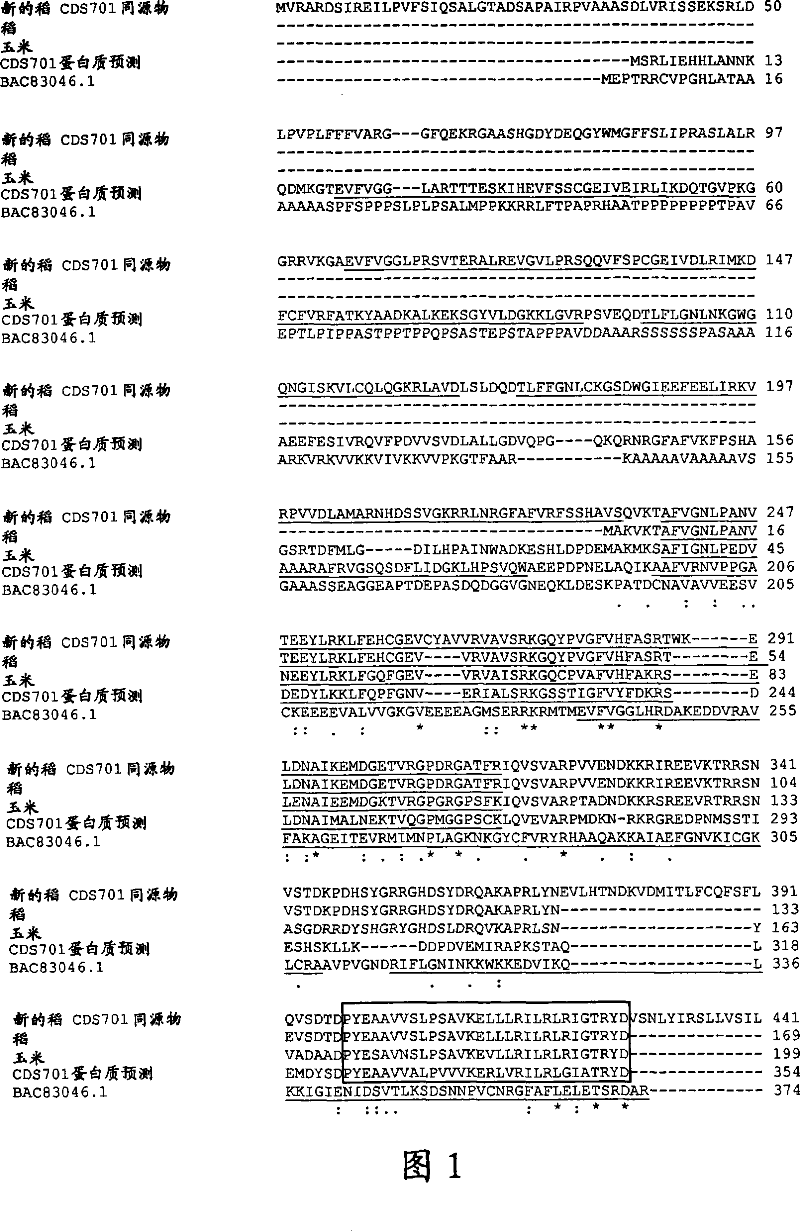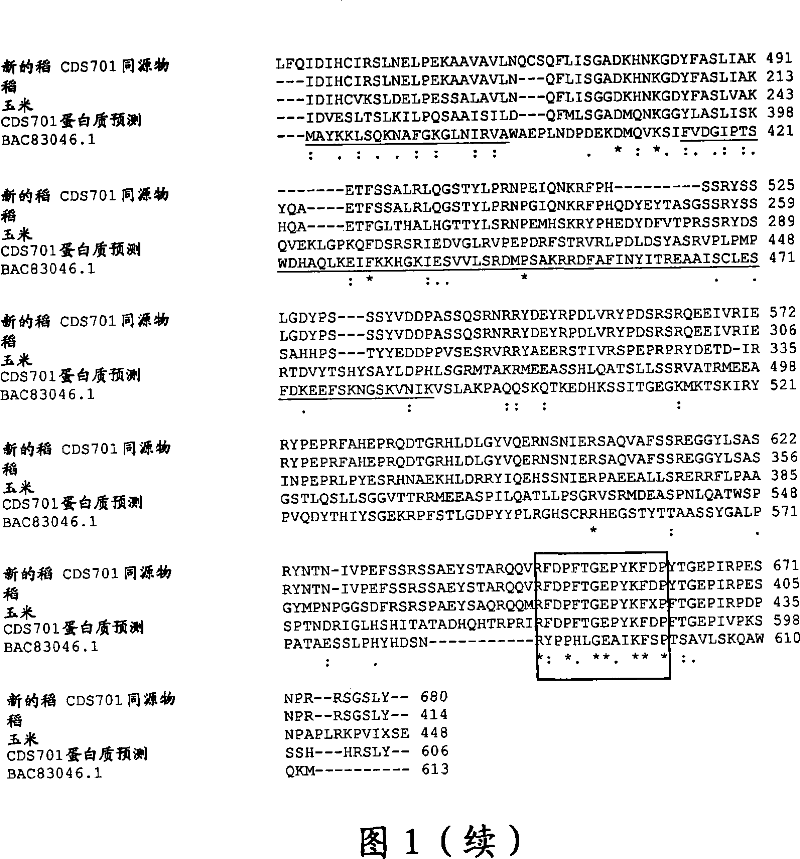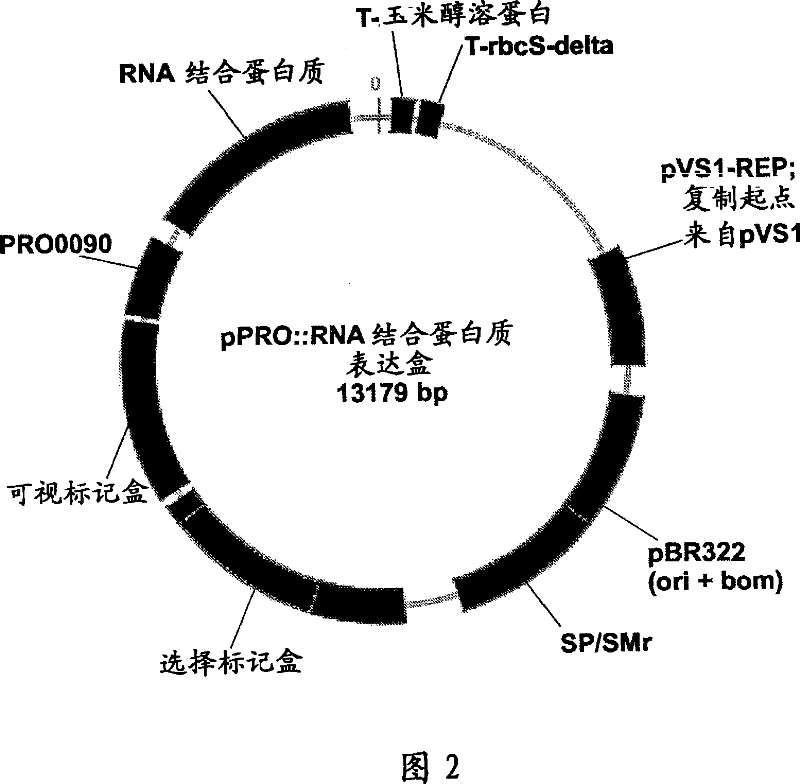Plants having improved growth characteristics and method for making the same
A characteristic, plant technology, applied in the field of molecular biology, to achieve the effect of improving growth characteristics and increasing yield
- Summary
- Abstract
- Description
- Claims
- Application Information
AI Technical Summary
Problems solved by technology
Method used
Image
Examples
Embodiment 1
[0144] Embodiment 1: Gene cloning-gene coding for tobacco RNA binding protein
[0145] Genes encoding RNA-binding proteins were initially identified as expressed sequence tags from tobacco BY2 cells and isolated as partial sequences in a CDNA-AFLP experiment using samples from synchronized tobacco BY2 cell cultures (Nicotiana tabacum L. cv.BrightYellow-2) prepared cDNA execution. Based on this CDNA-AFLP experiment, cell cycle-regulated BY2 signatures were identified and selected for further clones. Screening of tobacco cDNA libraries and isolation of full-sequence cDNA using expressed sequence tags.
[0146] Synchronization of BY2 cells
[0147] Tobacco BY2 (Nicotiana tabacum L. cv. Bright Yellow-2) culture cell suspensions were synchronized in early S phase by arresting the cells with aphidicolin as follows. Cultured cell suspensions of tobacco Bright Yellow-2 were maintained as described (Nagata et al. Int. Rev. Cytol. 132, 1-30, 1992). For synchronization, 7-day-old sta...
Embodiment 2
[0160] Example 2: Rice Transformation
[0161] Mature dry seeds of Japanese cultivar Nipponbare (NB) were dehulled. by incubating in 70% ethanol for one minute, followed by 0.2% HgCl 2 30 minutes, followed by 6 washes with distilled water, 15 minutes each time for disinfection. The sterile seeds are then germinated on medium containing 2,4-D (callus induction medium). After four weeks of incubation in the dark, embryogenic scutellum-derived calli were excised and propagated in the same medium. After two weeks, the calli were propagated or propagated by subculturing in the same medium for a further 2 weeks. Three days prior to co-cultivation, embryogenic callus fragments were subcultured on fresh medium (in order to promote cell division activity). Agrobacterium strain LBA4404 containing the binary T-DNA vector was used for co-cultivation. Agrobacterium was inoculated in AB medium containing appropriate antibiotics and cultured at 28°C for 3 days. Bacteria are then harves...
Embodiment 3
[0162] Example 3: Evaluation and Results
[0163] Approximately 15 to 20 independent TO rice transformants were generated. Primary transformants were transferred from the tissue culture room to the greenhouse for growth and T1 seeds were harvested. Five events were retained in which the T1 progeny segregated 3:1 for the presence / absence of the transgene. Approximately 10 T1 seedlings containing the transgene (heterozygous and homozygous) and an equal number of approximately 10 T1 seedlings lacking the transgene (nullzygote) were selected in each event by monitoring the expression of the visible markers. The 4 T1 events were further evaluated in the T2 generation following the same evaluation method as the T1 generation, but with more individuals for each event that was further evaluated.
[0164] Statistical analysis: F-test
[0165] A two-way ANOVA (Analysis of Variation) was used as a statistical model for the overall assessment of plant phenotypic properties. F-tests were...
PUM
 Login to View More
Login to View More Abstract
Description
Claims
Application Information
 Login to View More
Login to View More - R&D Engineer
- R&D Manager
- IP Professional
- Industry Leading Data Capabilities
- Powerful AI technology
- Patent DNA Extraction
Browse by: Latest US Patents, China's latest patents, Technical Efficacy Thesaurus, Application Domain, Technology Topic, Popular Technical Reports.
© 2024 PatSnap. All rights reserved.Legal|Privacy policy|Modern Slavery Act Transparency Statement|Sitemap|About US| Contact US: help@patsnap.com










